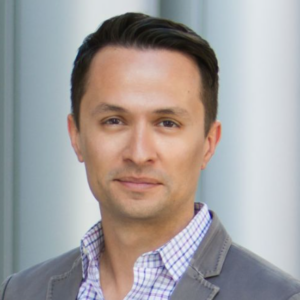NIC’s MAP project: Checking in one year later
|
| "I don't think what we uncovered is shocking; it is basically grounded in common sense," explains Mullen. "We are seeing that nursing homes that either are forced into or try to become predominantly Medicaid-oriented facilities have shown a somewhat lower occupancy rate-250 to 300 basis points lower. It basically is showing that not only in terms of occupancy, but what you can actually get for your private-pay rates, if you are orienting more toward a Medicaid population, you are taking more risk. This doesn't mean that there aren't successful homes that have a high Medicaid rate-there clearly are. It just means that you are going to have a stiffer headwind on the private-pay prices you can command and on occupancy rates. What's intriguing is that this also tends to hold true with Medicare in one good way and one not-so-good way. Those that are targeting a higher Medicare mix, maybe 30% of the residents, are suffering a little bit on occupancy, but the positive news is that they are getting a higher rate on their private-pay beds, about $41 a day above a Medicaid-oriented home and about $6 a day above the typical payer-mix home. It may be common sense, but I don't think anyone has actually been able to prove this before." Clearly the trend toward nursing home private-pay has been down dramatically during the past 25 years and continues to be down in terms of the percentage of total nursing home beds, although the decline has clearly slowed. "We don't know where the bottom is, but we certainly are closer to the bottom than we were 25 years ago when the private-pay nursing home market first started to erode," Mullen explains. "A lot of that came with the growth of assisted living and the demise of the intermediate care nursing facility," adds Kramer. "Many people before who might have gone into a nursing home and would have hit that private-pay market are now in an assisted living community instead. This change in the market has really accelerated that drop in the private-pay nursing market because assisted living costs less, but it is primarily a private-pay market, just as skilled nursing is now primarily a government-funded market." "In terms of a trend seen in our numbers, clearly the private-pay nursing numbers are not going back up," says Mullen. "When you look at what has happened over the past few years, there is some compelling evidence that it is still in decline. Is the private-pay percentage going to fall down to 5% in nursing? My opinion would be no, but it certainly could slip to 10 or 11% in the next few years. Because of the severe Medicaid budget deficits in most states, there is a loosening, if you will, of the regulations to allow heavier-care residents into assisted living facilities. Some states are actually providing incentives to close down their nursing beds and switch over to assisted living. So I feel that this broader trend will continue, but at a decelerated rate." Kramer agrees, but also cautions that observers not jump to conclusions either: "It would be a mistake to assume that eventually private pay is going to disappear from the skilled nursing facility. The reality is that as people live longer, very frail people with complex chronic conditions are not going to be suitable or, by regulation, able to be in an assisted living community." At press time, data from the fourth quarter of 2004 had just arrived and had yet to be fully investigated, but Kramer and Mullen still had observations they could make based on their initial impressions, and even some beyond that time frame. "There is the ongoing issue of the median age of the nursing home properties in the 30 MSAs, which is 27 years old. Obviously these aging properties pose a major challenge for the operators in terms of the ongoing viability and competitiveness in the market," says Kramer. "The data here are pretty compelling. In contrast, the median age for assisted living properties is only 12 years, and for dementia care it is 7 years. I think that is a significant issue that will continue to be a real challenge." Another trend that bears watching is the fact that the private-pay resident and the Medicare resident are key to the viability of the property. "The size of the differential between the median market rate for assisted living, which runs approximately $2,700 per month, versus the rate for private-pay nursing, which is approximately $5,200 per month, is larger than I expected," observes Kramer. "The fact of the differential is not a surprise, but the size is." Looking for some positive news? Occupancies are still strong across all property types. "There has been concern particularly with assisted living properties about oversupply and weak demand," says Kramer. "But within the top 30 MSAs, demand has certainly caught up with the supply." With significant trends such as these seen after only a year of collecting data, NIC's MAP project should continue to provide key insights for years to come. For more information on NIC's MAP Project, visit www.NIC.org. |
I Advance Senior Care is the industry-leading source for practical, in-depth, business-building, and resident care information for owners, executives, administrators, and directors of nursing at assisted living communities, skilled nursing facilities, post-acute facilities, and continuing care retirement communities. The I Advance Senior Care editorial team and industry experts provide market analysis, strategic direction, policy commentary, clinical best-practices, business management, and technology breakthroughs.
I Advance Senior Care is part of the Institute for the Advancement of Senior Care and published by Plain-English Health Care.
Related Articles
Topics: Articles , Finance











